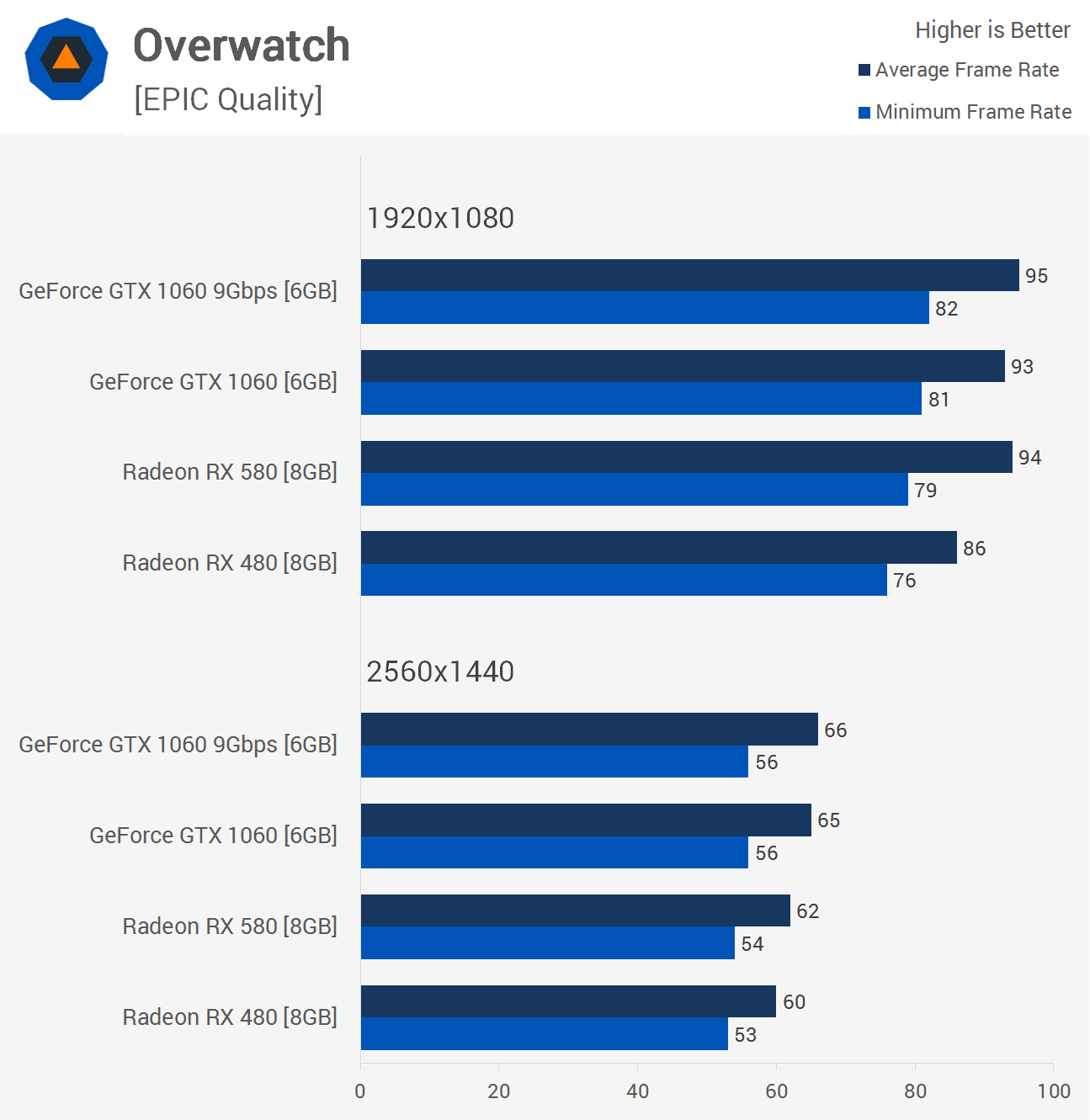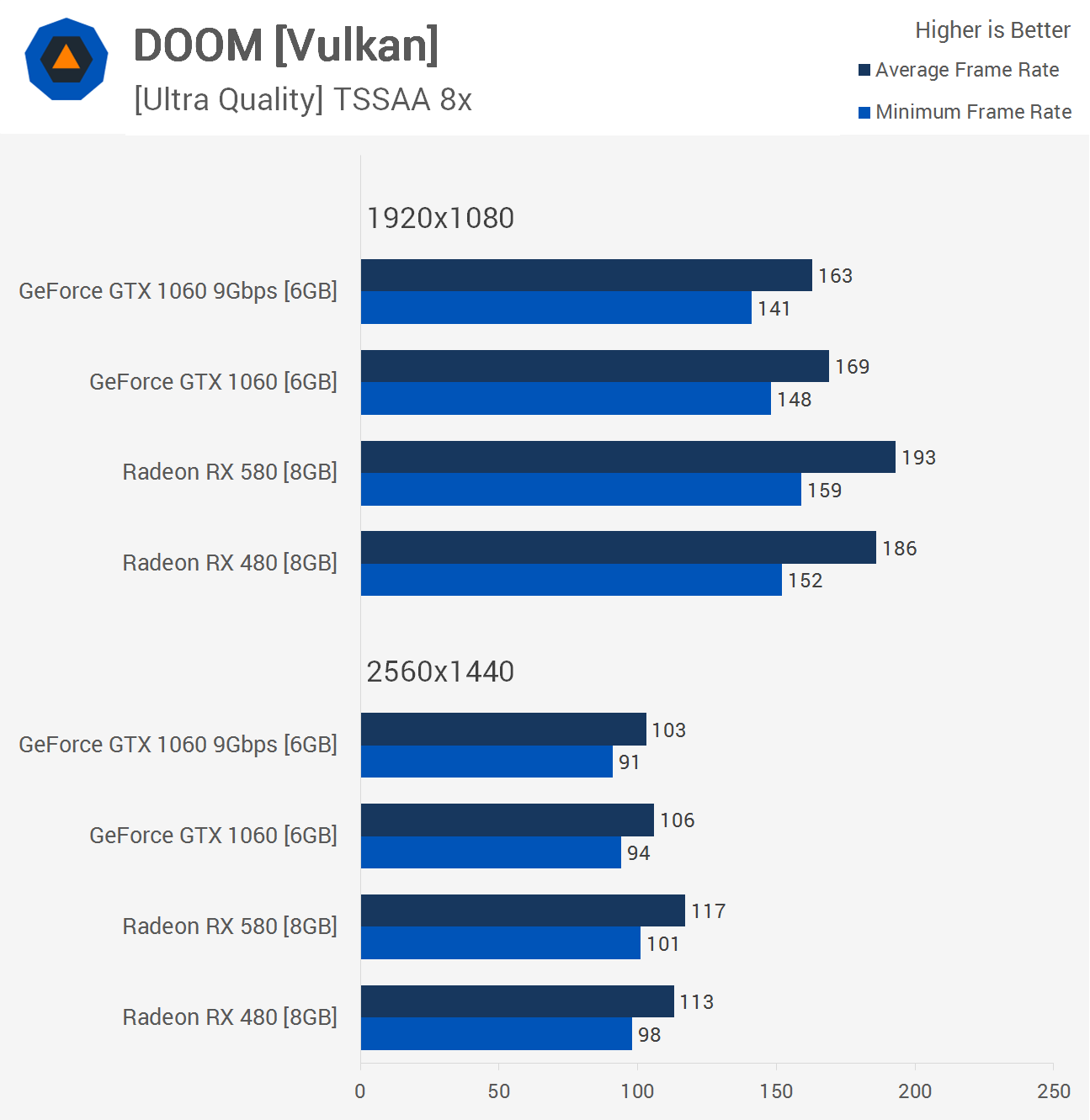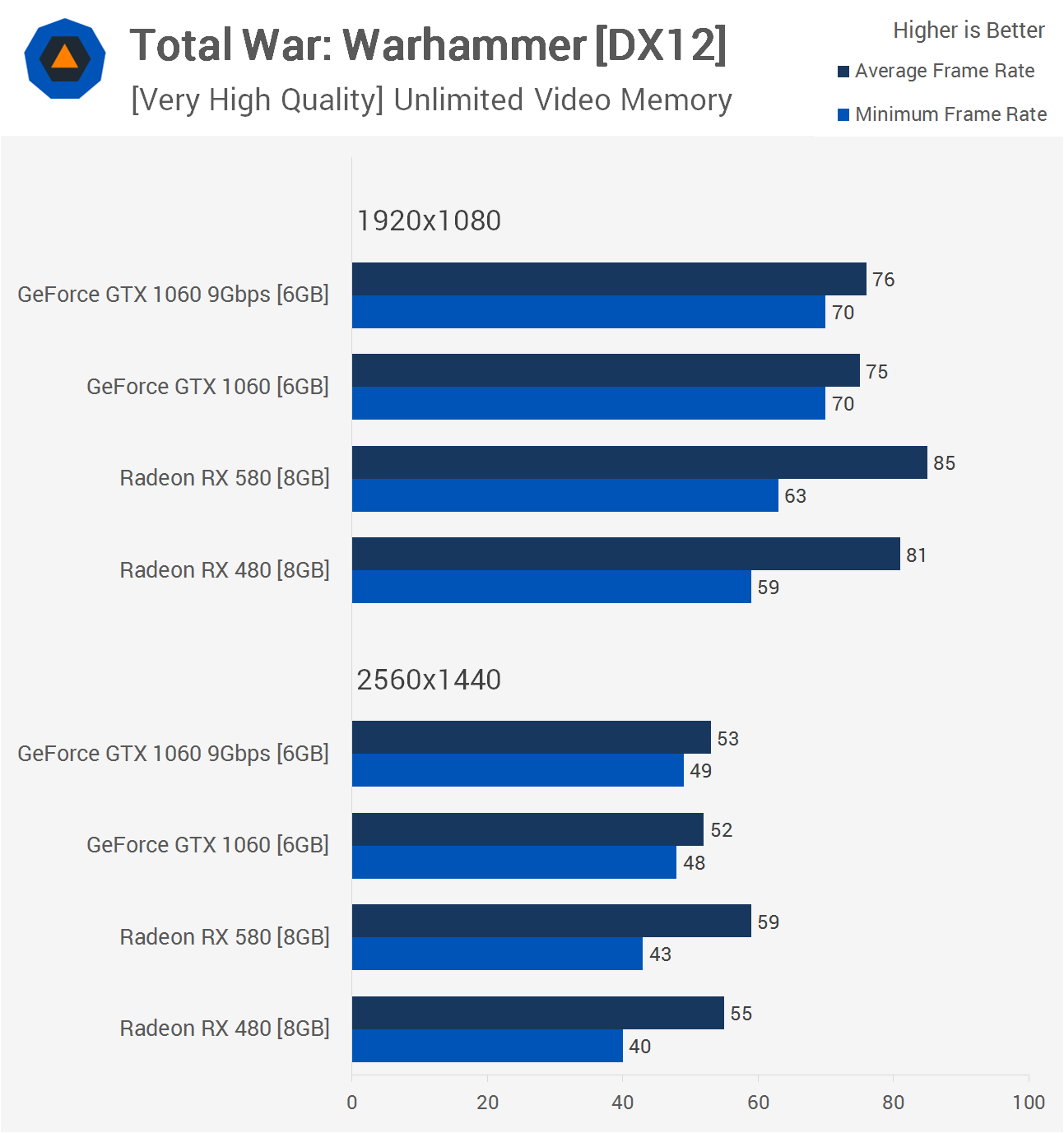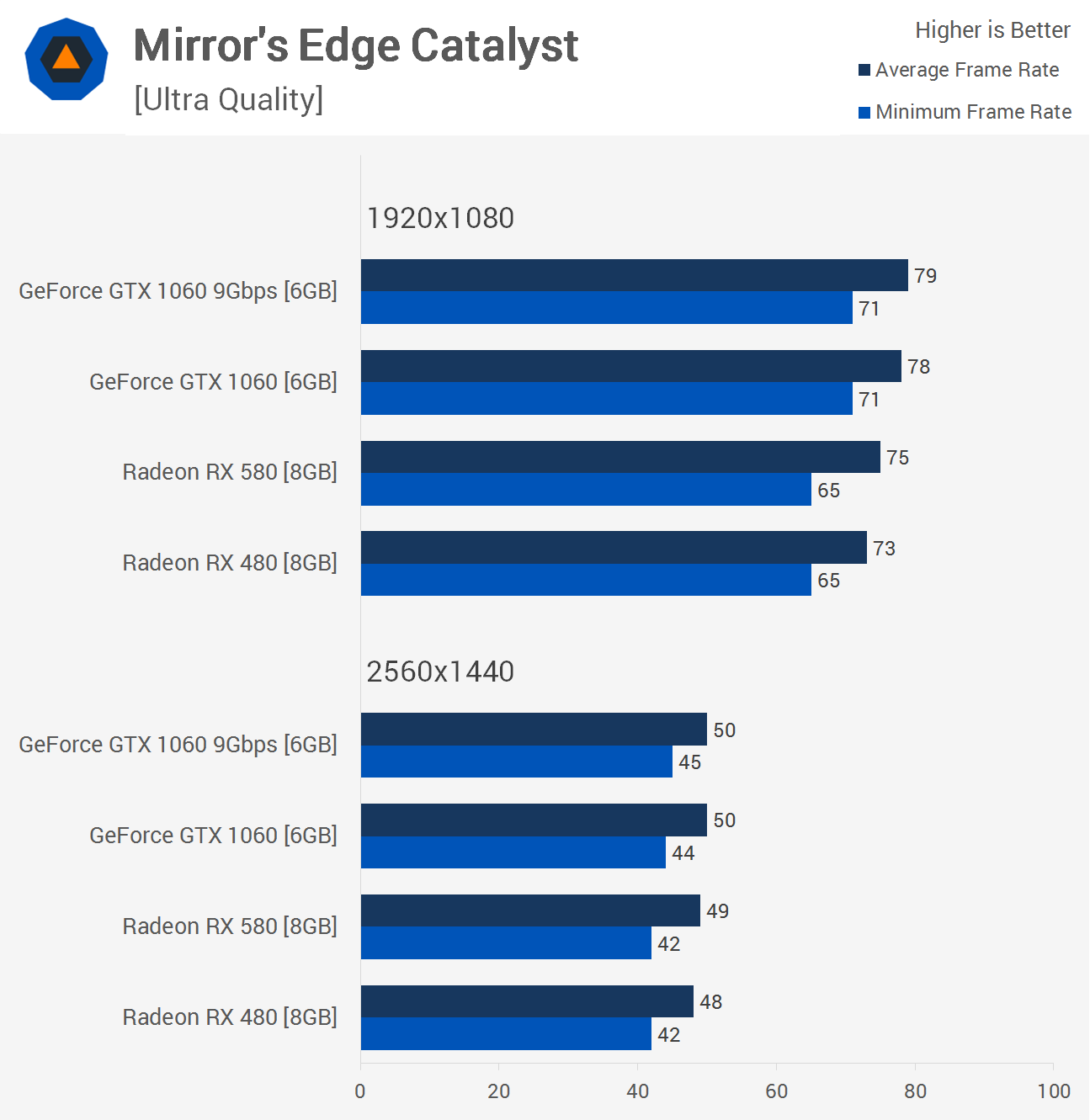Overwatch, Doom, Warhammer, Mirror's Edge

For testing Overwatch I used the same five minute test used to measure CPU performance, which is a 12-player bot match. The epic quality preset was used and the render scale was manually set to 100%.
Here we see at 1080p that the higher clocked RX 580 makes up a good bit of ground on the GTX 1060, while the higher 9Gbps memory version of the 1060 makes little difference.

And here it is, still the only demanding game to take advantage of the Vulkan API, to AMD's dismay no doubt. Interestingly, the standard GTX 1060 (if you can call the EVGA FTW+ model standard) is faster than the MSI Gaming X+ that utilizes the higher-clocked memory. The margins weren't significant though the older version was 4% faster at 1080p.
What's key to note here is just how much faster the Radeon RX 580 is when compared to the fastest GTX 1060 tested – 14% faster is the largest performance discrepancy seen so far. Even the RX 480 lays waste to both the GTX 1060 models in this title.

Total War: Warhammer has been tested exclusively using DirectX 12 and this appears to had a rather large lead to the Radeon GPUs. That said, it's interesting to note that even with the low-level API the AMD GPUs do dip down to lower frame rates, despite delivering stronger average performance.
Honestly the experience seemed very much the same using any one of the four graphics cards tested, though looking at the figures you might assume the GeForce graphics card provided the smoother experience.

The RX 580 was just 3% faster than the RX 480 in Mirror's Edge Catalyst when comparing the average frame rate while the minimum was exactly the same. This meant it was 4% slower than the GTX 1060. The new 9Gbps version of the GTX 1060 also offered nothing new in terms of performance for this title.
